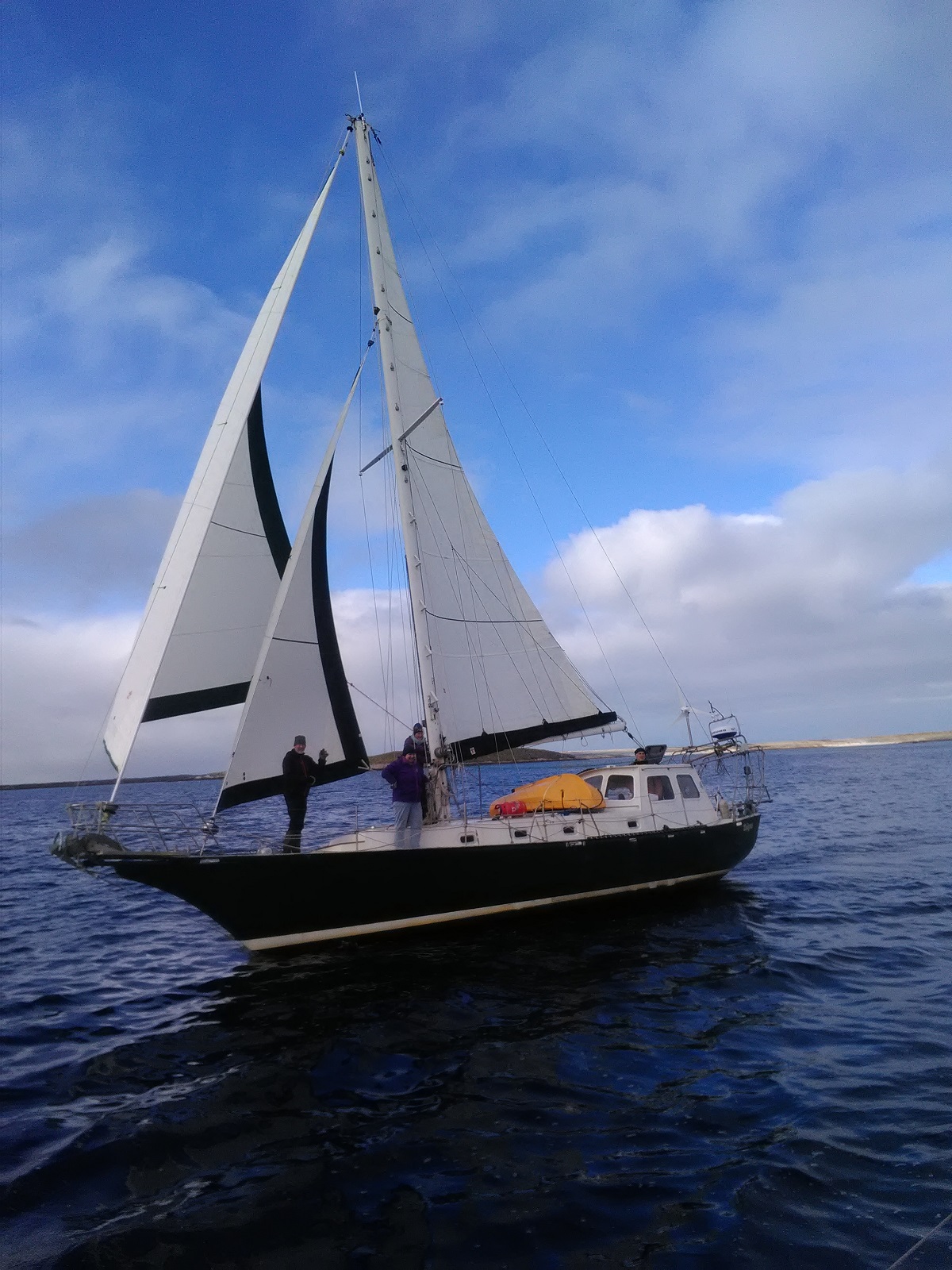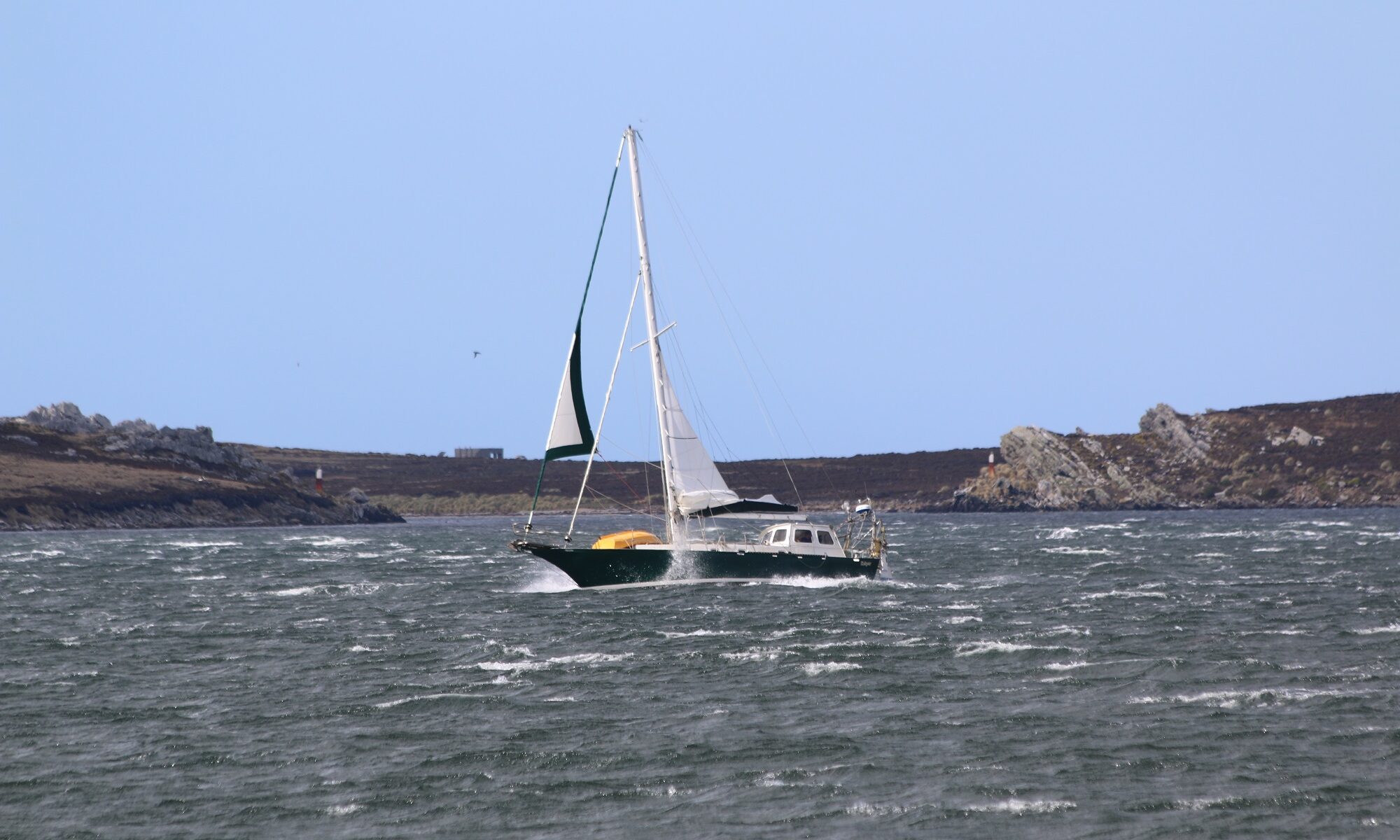Kelper
Kelper is a Goderich 37 designed by Edward S. Brewer, and built by Huromic Metal Ind. Ltd. in 1979 in Goderich, Ontario, Canada
She is constructed from steel, has a round bilge and a long keel. Spars are aluminium.
The name comes from a term that was used for Falkland Islanders in the past, but not heard often now. Islanders were referred to as Kelpers which is believed to came from the band of kelp that surrounds the islands.
We purchased it in 2015 from a couple in North Carolina, USA, and sailed it to the Falkland Islands in 2016. First, I spent 2 years extensively refitting the boat by adding a pilot house, remodelling the inside, upgrading all hatches and port holes, fitting additional fuel tanks, inserting a 6 hp Vetus bow thruster and replating a large amount of the underwater hull and keel.
I have also converted it to a cutter rig with roller reefing on both headsails.
The new suite of sails includes both heavy and light weight cloths,
so we have different options for high latitude and tropical sailing.
The ‘Iron Topsail’
The engine is a 36hp Buhk DV36M. We normally run it at around 2400
rpm out of a possible 3600 as this is the most economic speed. Under
reasonable conditions, our boat speed will be 5 knots. This will give us
around 500 miles range from our fuel tanks.
Living Aboard
We think we’ve got it quite cosy and we certainly have everything we
need. There is sleeping for 3 in separate bunks as well as the option
for a further 2 bunks if the settees are converted. For heating, there
is either a solid fuel fire made by me from a welding oxygen
cylinder(!), which is a bit like Chernobyl when going well, or a rally
car heater working off redirected engine cooling water. And, of course,
there is the option of lots of clothes if we’re sailing with no engine
and conditions mean the fire can’t be lit.
Our gas cooker is 3 burner with oven. We also have a small micro wave and electric kettle so when there is sufficient wind for the batteries we can save on gas. Plus LOTS of storage space for 6 months of fresh, dried and tinned food.


.jpg)

